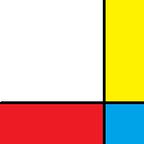Millet: Depicting Peasants in the Awaken of Capitalism
1840年代末,欧洲各国陆续从封建主义向资本主义过渡。社会制度的改变使得财富成为衡量万物的重要标准,人与人之间的关系也渐趋冷漠。在此背景下,客观而冷静地观察并剖析社会,以揭露黑暗、倡导社会改良变的尤为重要。于是现实主义运动开始了,并快速成为艺术、文学的主要流派。现实主义反对夸张的情绪表达,转而追求真实而准确地描绘现实生活中的人物和情景,尤其是那些所谓“不完美”的人和事。
In the late 1840s, European countries gradually transitioned from feudalism to capitalism. Changes in social systems have made wealth an essential criterion for measuring everything, and the relationship between people has increasingly become indifferent. It is particularly important to observe and analyze society objectively and calmly to expose the darkness and advocate social reforms in this context. So the realism movement began and quickly became the primary genre of art and literature. Realism opposes exaggerated emotional expression and instead pursues a true and accurate depiction of people and situations in real life, especially those so-called “imperfect” people and things.
让-弗朗索瓦·米勒(Jean-François Millet)(1814–1875)法国现实主义运动的参与者。他出生于法国农耕家庭,童年便开始与父亲一同在田间劳动。成为画家后,乡村风俗成为了他的主要绘画主题。
Jean-François Millet (1814–1875) was the main contributor to the French realism movement. He was born in a French farming family, and he began working in the fields with his father as a child. After becoming a painter, rural customs became his central painting theme.
在米勒之前也有很多画农民的画家,但他们笔下的农民大多都在打架、闲聊、大吃大喝,米勒所画的《播种者》是一个正在劳作的农民,他的腰间挂着袋子,边向前迈步边撒种。在这幅画作中我们看到的是劳作流汗、充满力量的农民形象。
Before Miller, many painters painted peasants, but most of the peasants in their paintings were fighting, chatting, eating, and drinking. Miller’s painting “The Sower” is a farmer working, with his waist hanging the bag, sowing seeds while stepping forward. In this painting, we see a peasant’s image who is working, sweating, and full of power.
圣经旧约中曾有这样一个故事 — — 路德在波阿斯田里捡拾收割后的剩余麦穗,以供养自己的婆婆拿俄米。这幅《拾穗者》似有异曲同工之妙 — — 画面中三名农妇在麦田中捡拾收割过后剩余的麦穗,远处可以看到坐在马背上的监督者。
There was a story in the Old Testament of the Bible — — Luther picked up the leftover wheat ears in the Boaz field to provide for his mother-in-law Naomi. This “The Gleaners” seems to have the same effect. — — In the picture, three peasant women pick up the remaining wheat ears in the wheat field. In the distance, you can see the supervisor sitting on horseback.
贫苦人民只有捡拾遗留麦穗以求温饱,而富人却能在马背上颐指气使。
The poor can only pick up the leftover ears of wheat for food and clothing, while the rich can dictate on horseback.
《晚祷》是一幅存在争议的画作。大部分学者认为这幅画描绘的是农民随遇而安的性格 — — 夕阳西下,远处教堂钟声响起,一对农民夫妇放下手中的工作,双手合十,虔诚祈祷,似乎是在感谢上帝的恩赐,又或许是在乞求上帝的保佑。但达利在《米勒晚祷中的悲剧神话》中宣称这原本是一幅葬礼画。1963年卢浮宫对画作进行了X光扫描,发现农妇身后装满作物的推车原本画着一个小棺材。
“The Angelus” is a controversial painting. Most scholars believe that this painting depicts the peasant’s character that is easy to meet. — — As the sun sets, the church bell rang in the distance, and a peasant couple put down their work, put their hands together, prayed devoutly, and seemed to be thanking God for the gift. Or maybe begging for God’s blessing. But Dalí declared in “The Angelus by Jean-François Millet” that it was initially a funeral painting. In 1963, the Louvre carried out an X-ray scan of the painting and found that the cart full of crops behind the peasant woman was initially painted with a small coffin.
